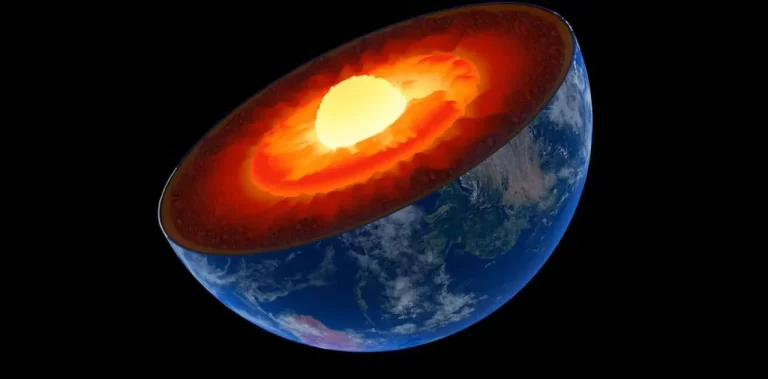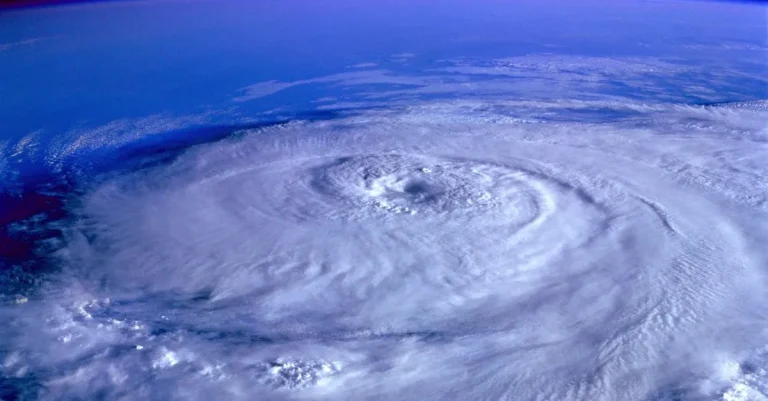Examining The Ways Science Studies The Natural World
Science touches nearly every aspect of our modern lives, from the technology we use to the understanding we have of our own planet and universe. But what exactly is science, and how does it go about studying the natural world? Science can seem mystifying to many of us who aren’t scientists.
If you’re short on time, here’s a quick answer: Science is the systematic study of the structures and behaviors of the physical and natural world through observation and experimentation. The scientific method allows scientists to test hypotheses and build an expanding body of knowledge.
In this approximately 3000 word article, we will explore in depth how science is defined by its process of studying the natural world through empirical, testable means. We’ll examine the scientific method and its different components more closely.
We’ll also look at the various branches of science, from physics and chemistry to earth science and astronomy, and how scientists in these fields go about advancing human understanding.
Defining Science
Science is a systematic and logical approach to understanding the natural world. It is a field of study that seeks to explain natural phenomena through observation, experimentation, and analysis. By using evidence-based methods, scientists aim to uncover the underlying principles that govern the universe.
Science Seeks Naturalistic Explanations
One of the fundamental aspects of science is its commitment to naturalistic explanations. This means that scientists seek to explain phenomena using only natural causes and processes, without invoking supernatural or mystical explanations.
By relying on empirical evidence and rigorous experimentation, science aims to provide objective and verifiable explanations for the phenomena we observe.
For example, when studying the formation of stars, scientists do not attribute their origin to divine intervention or supernatural forces. Instead, they investigate physical processes such as gravitational collapse and nuclear fusion to understand how stars are born and evolve.
The Goal of Science is Knowledge and Understanding
The primary goal of science is to acquire knowledge and understanding of the natural world. Scientists are driven by curiosity and a desire to uncover the underlying principles that govern the universe.
Through systematic observation, experimentation, and analysis, they strive to increase our understanding of the world around us.
Whether it is studying the behavior of subatomic particles or exploring the depths of the ocean, scientists are constantly pushing the boundaries of human knowledge. Their discoveries not only deepen our understanding of the natural world but also pave the way for technological advancements and practical applications.
Science is a Process, Not Just Facts
Science is not just a collection of facts, but rather a process of inquiry and discovery. It is a dynamic and ever-evolving field that relies on critical thinking, skepticism, and peer review. Scientists formulate hypotheses, design experiments, collect data, and analyze results to refine our understanding of the natural world.
It is important to note that science is not infallible, and it is subject to revision based on new evidence and insights. This self-correcting nature is what makes science such a powerful tool for understanding the natural world.
As new discoveries are made and theories are refined, our understanding of the world continues to expand.
To learn more about the scientific process and its impact on society, you can visit Scientific American or National Geographic.
The Scientific Method
The scientific method is a systematic approach used by scientists to study and understand the natural world. It involves a series of steps that help researchers gather and analyze data in order to draw valid conclusions.
By following this method, scientists are able to ensure that their findings are reliable and can be replicated by others.
Making Observations
The first step in the scientific method is making observations. Scientists carefully observe the natural world, noting patterns, behaviors, and phenomena. These observations can be made through direct observation or by using instruments and technology to collect data.
For example, astronomers observe the movement of celestial bodies, while biologists may observe the behavior of animals in their natural habitats.
Forming a Hypothesis
After making observations, scientists then form a hypothesis. A hypothesis is an educated guess or prediction about a specific phenomenon or relationship. It is based on the observations made and existing scientific knowledge.
The hypothesis must be testable and falsifiable, meaning that it can be proven true or false through experimentation. For example, a scientist may hypothesize that increasing the amount of fertilizer will lead to increased plant growth.
Designing Experiments
Once a hypothesis is formed, scientists design experiments to test its validity. The experiment should be carefully designed to control variables and isolate the effect of the independent variable on the dependent variable.
The independent variable is the variable that is manipulated, while the dependent variable is the variable that is measured. In our fertilizer example, the independent variable would be the amount of fertilizer, while the dependent variable would be the plant growth.
Analyzing Results and Drawing Conclusions
After conducting the experiment, scientists analyze the results to determine if their hypothesis is supported or refuted. This involves collecting and organizing data, using statistical analysis to identify patterns or trends, and drawing conclusions based on the evidence.
If the results support the hypothesis, scientists may revise and refine their hypothesis, or they may propose new hypotheses to further explore the topic. If the results do not support the hypothesis, scientists may need to reconsider their initial assumptions and start the process again.
Branches of Science
Science is a vast field that encompasses various disciplines and branches, each focusing on different aspects of the natural world. These branches of science employ different methodologies and techniques to study and understand the phenomena around us. Here are some of the main branches of science:
Physical Sciences (Physics, Chemistry, etc.)
The physical sciences deal with the fundamental principles and properties of matter and energy. Physics, for example, examines the behavior of matter and energy in the universe. It explores concepts such as motion, forces, electricity, and magnetism.
Chemistry, on the other hand, delves into the composition, structure, properties, and changes of matter. It investigates elements, compounds, and reactions that occur between substances. Both physics and chemistry play integral roles in our understanding of the physical world and have practical applications in various fields.
Earth and Space Sciences
The Earth and space sciences focus on the study of our planet, its atmosphere, and the celestial bodies that surround us. Geology, for instance, studies the Earth’s composition, history, and the processes that shape its surface.
It encompasses the study of rocks, minerals, and the forces that cause earthquakes and volcanic eruptions. Astronomy, on the other hand, examines the universe beyond our planet. It explores galaxies, stars, planets, and other celestial objects.
This branch of science helps us understand the origins, evolution, and properties of the vast cosmos we inhabit.
Life Sciences (Biology, Ecology, etc.)
The life sciences deal with the study of living organisms and their interactions with the environment. Biology, the most well-known branch of the life sciences, explores the various aspects of life, including the structure, function, growth, and evolution of organisms.
It encompasses sub-disciplines such as genetics, microbiology, and botany. Ecology, on the other hand, focuses on the relationships between organisms and their environment. It studies the interdependence of living organisms, their habitats, and the ecosystems they form.
The life sciences play a crucial role in understanding the diversity and complexity of life on Earth.
Social Sciences
The social sciences examine human behavior, societies, and the interplay between individuals and communities. Sociology, for example, studies social interactions, institutions, and the development of societies. It explores topics such as social stratification, culture, and social change.
Psychology focuses on the human mind and behavior, seeking to understand cognitive processes, emotions, and personality. Other social sciences include anthropology, economics, political science, and geography.
These disciplines provide valuable insights into human societies, their structures, and the factors that shape them.
By studying the natural world through these different branches of science, researchers and scientists gain a deeper understanding of our universe and the intricate systems that govern it. Whether it’s unraveling the mysteries of the cosmos, exploring the complexities of life, or understanding human behavior, science helps us make sense of the world we live in.
Tools and Technology in Science
Science has made remarkable progress in understanding the natural world, thanks to the development and utilization of various tools and technologies. These advancements have significantly enhanced the accuracy and efficiency of scientific research, allowing scientists to delve deeper into their investigations.
This section will explore the different types of tools and technologies used in scientific studies.
Scientific Instruments
Scientific instruments play a crucial role in enabling scientists to observe and measure various phenomena in the natural world. These instruments are specially designed to collect data and provide precise measurements.
Examples of scientific instruments include telescopes, microscopes, spectrometers, and particle accelerators. These instruments allow scientists to explore the vastness of the universe, investigate the microscopic world, analyze the composition of substances, and even simulate conditions similar to those found in extreme environments.
Laboratory Methods and Equipment
In the controlled environment of a laboratory, scientists employ a wide range of methods and equipment to conduct their experiments. Laboratory methods involve carefully designed procedures and protocols to ensure accuracy and reproducibility.
Equipment such as centrifuges, pipettes, chromatographs, and incubators are used to perform various tasks, including separating substances, measuring volumes, analyzing chemical components, and maintaining specific conditions for biological samples.
These tools and techniques allow scientists to carry out experiments under controlled conditions, leading to reliable and precise results.
Field Research Methods
While laboratories provide controlled environments, scientists also conduct research in the field to study natural phenomena in their natural habitats. Field research methods involve direct observation, data collection, and analysis in real-world settings.
Scientists may use tools such as GPS devices, drones, underwater cameras, and weather stations to gather data. Field research allows scientists to study ecosystems, observe animal behavior, monitor environmental changes, and gather data that cannot be replicated in a laboratory.
It provides valuable insights into the dynamics of the natural world.
Computing and Data Analysis
With the advent of computing technology, scientists can now process and analyze vast amounts of data more efficiently. Computers and software programs enable scientists to organize, manipulate, and visualize data, making complex analyses more accessible.
Additionally, statistical tools and modeling software allow scientists to make predictions and draw conclusions from their data. The use of data analysis techniques, such as regression analysis, machine learning, and data mining, has revolutionized scientific research in fields ranging from genetics to climate science.
Scientific tools and technologies have revolutionized the way researchers study the natural world. These advancements have enabled scientists to explore the universe, investigate microscopic structures, analyze complex data, and conduct experiments under controlled conditions.
By leveraging these tools and technologies, scientists continue to expand our knowledge and understanding of the natural world.
Scientific Institutions and Communities
Academic and Research Institutions
Academic and research institutions play a vital role in advancing scientific knowledge and understanding. These institutions, such as universities and research centers, provide the necessary infrastructure, resources, and expertise for scientists to conduct their studies.
Professors and researchers at these institutions are often at the forefront of scientific discoveries, conducting groundbreaking research in various fields.
For example, the Massachusetts Institute of Technology (MIT) is renowned for its cutting-edge research in fields like artificial intelligence and nanotechnology. The institution’s faculty members and students collaborate on projects that push the boundaries of scientific knowledge and drive innovation.
Scientific Societies and Organizations
Scientific societies and organizations bring together individuals with shared scientific interests and provide a platform for collaboration, networking, and knowledge exchange. These societies often organize conferences, symposiums, and workshops where scientists can present their research findings, discuss emerging trends, and foster interdisciplinary collaborations.
One prominent example is the American Association for the Advancement of Science (AAAS), which is the world’s largest multidisciplinary scientific society. The AAAS publishes the journal Science and organizes the annual AAAS meeting, where scientists from various fields come together to share their work and explore new avenues of research.
Science Communication and Publishing
Science communication and publishing are essential for disseminating scientific knowledge to a wider audience. Science journalists, popular science writers, and science communicators play a crucial role in translating complex scientific concepts into accessible language for the general public.
Scientific publishing houses, such as Nature and Science, provide a platform for scientists to publish their research findings in peer-reviewed journals. These journals ensure the quality and credibility of scientific research by subjecting it to rigorous scrutiny by experts in the field.
Funding and Policy
Funding and policy decisions significantly influence the direction and progress of scientific research. Government agencies, private foundations, and industry partners provide financial support for scientific studies, enabling scientists to conduct their research and develop new technologies.
For instance, the National Institutes of Health (NIH) in the United States is the largest public funder of biomedical research. Its funding supports groundbreaking discoveries in areas such as cancer research, genetics, and infectious diseases.
Policy decisions also shape the scientific landscape by setting priorities, regulations, and ethical guidelines for research. These policies ensure the responsible conduct of research and protect the rights and welfare of human subjects and animal models.
Conclusion
In summary, science is deeply rooted in an evidence-based process of testing natural explanations through controlled observation and experimentation. While scientific knowledge grows over time, the scientific method itself remains constant as the fundamental way of studying the diverse phenomena of the natural world.
This process of inquiry continues to expand the frontiers of human understanding through a collaborative scientific community.







